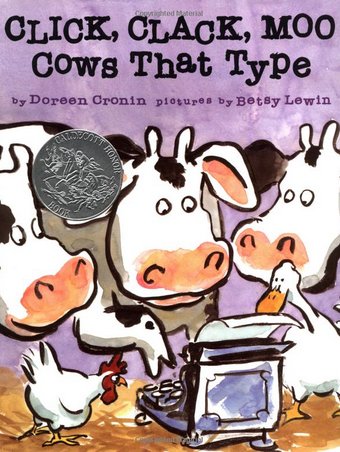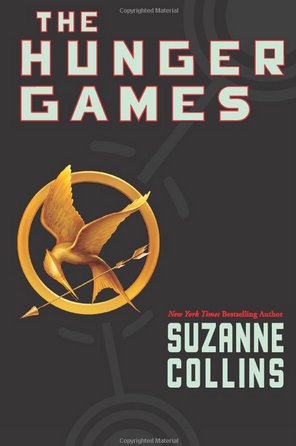Word families are groups of words that have a common feature or pattern - they have some of the same combinations of letters in them and a similar sound. For example, at, cat, hat, and fat are a family of words with the "at" sound and letter combination in common.
The 37 most common word families in English (according to Wylie and Durrell) are: ack, ain, ake, ale, all, ame, an, ank, ap, ash, at, ate, aw ay, eat, ell, est, ice, ick, ide, ight, ill, in, ine, ing, ink, ip, it, ock, oke, op, ore, ot, uck ,ug, ump, unk. Many of the nursery rhymes contain common word families. You can use these rhymes to teach these letter combinations (and how they are spelled and spoken), having the students sound them out after memorizing the rhyme.
(from: http://www.enchantedlearning.com/rhymes/wordfamilies/)
My kindergarten groups have been working on short a word families such as -at and -an. They are learning that if we notice a word family in one word we an read and write many more words! Look at their great work below:
Friday, May 30, 2014
Tuesday, May 20, 2014
A Guide For Parents to Guided Reading Levels
Your child's progress reports recently came home and you might have been wondering what their reading level listed on it meant. The article below explains what each level looks like. If you have any questions after reading this, feel free, as always to contact me.
By Polly Goltche
Reading Specialist
So now you know your child’s reading level! Your student’s teachers have assessed using running records, you’ve had your last parent-teacher meeting, and you have a good idea as to the level that is “Just Right” for your child. So what exactly do the different levels represent?
Here is a general guide to the Levels, A through Z:
Level A Books- It is recommended that children begin at this level once they have some familiarity with print and directionality (we read English from left to right). Full knowledge of all letter sounds is not necessary. These books include picture books with simple labels and captions, often 5-6 words per page, or one line. There is ample space between words, and typically repeating language.
Level B Books- These books have very simple story lines, or focus on one individual idea. They usually have one or two lines of print on a page, but sentences and punctuation is more varied than A Level books. Repeating patterns are seen again, and the written words correspond directly to the illustrations.
Level C Books- Stories at this level have simple story lines and are based upon topics that are familiar to children. For the most part they have more words and lines of print than A or B Level books, again include repeated patterns, and as new, more complex patterns are introduced throughout, children cannot simply predict the next page’s text. Sight-words, also known as high-frequency words, and easily decodable words are found at this level.
Level D Books- Slightly more complex these readers begin to introduce less concrete, more abstract or unfamiliar ideas to children. The word count in sentences is longer, and words are now carried over from one page, or more. Words at this level may include multisyllabic and compound words. Whereas earlier levels offer very strong correlation between word and picture, at this level, children cannot only rely on illustration to guess at the print.
Level E Books- More lines of text per page, and more pages per book characterize words at this level.
Words cross over pages, and new types of punctuation are introduced. The story lines are more sophisticated, and non-fiction books may include more difficult concepts (although at this level repeating language is still offered for support). Higher level multisyllabic and compound words are included.
Level F Books- These narrative texts have more episodes in the story. More complex and varied language patterns are also introduced, with shorter text. For the first time, abstract concepts that require children to use higher-thinking skills are present. Text is now presented in smaller font, and more lines of print per page. English punctuation in all form is seen at this level, along with a variety of more sophisticated high-frequency words.
Level G Books- At this level, books are no longer repetitive, and new patterns are introduced. Vocabulary becomes higher-level, and in non- fiction, vocabulary becomes very challenging, requiring some background knowledge. Text layout and font may become more complex, and illustrations no longer give clear indication of corresponding text.
Level H Books- These readers are very similar to the preceding level, but for the first time, no longer is simple prose the only text; poetry and figurative language are introduced, and repetitive patterns are not as common. Spoken language is no longer used exclusively, and written language is integrated and provides more sophisticated content, requiring closer attention to word patterns.
Level I Books- Books are this level are longer and the concepts presented are more complex than at earlier levels. The font is not as large, and word-attack skills begin to be called for, as text becomes increasingly complex. Fiction and non-fiction books at this level are numerous; fiction becomes more complex in plot and depth, and non-fiction includes technical, high-level language. Although pictures may illustrate the text, they no longer offer much support in terms of decoding text.
Level J Books- Books at this level are very similar to I Level books, but content becomes considerably more challenging. Chapter books are introduced that present complex characters and books now have very few illustrations. New vocabulary is presented in both fiction and non-fiction text.
Level K Books- At this level, narrative text begins to include multiple plots, and writing styles vary. Technical language and new, more difficult concepts are included in non-fiction.
Level L Books- The readers at this level are very similar to K Level books, except that they are longer and many informational picture books in the non-fiction category are available. In fiction, chapter books increase in complexity in terms of plot lines and character development. Higher- level thinking is called for in the area of abstract concepts and symbolism.
Level M Books- These books are generally set in much smaller font, and vocabulary and concepts are more complex, calling upon strong background knowledge for comprehension.
Level N Books- At this level, children are taken to new levels of writing, as text expands to include new genres, and writing style becomes more sophisticated. More abstract thinking is called for, as literary writing styles begin to expand, and call for students to use more of their imagination.
Level O Books- More complex vocabulary and themes are typical of writing at this level, and abstract thinking is required in narrative text. Interesting, complex characters are introduced, and students again, must expand upon their own world to understand and study the lives of others.
Level P Books- These books offer more complex language and informational texts. Varied organization in layout is present, and new genres are introduced. Books specifically geared toward early adolescents are now included.
Level Q Books- Books now require more interpretive skills, and structures and words are more difficult and complex. Words from other languages are now present, and longer texts require extended reading. Vocabulary is increasingly sophisticated and challenges the reader at this level.
Level R Books- At this level, fiction and non-fiction introduce varied historical periods and time settings. Again, vocabulary builds in sophistication and requires increasing interpretive skills.
Level S Books- Books at this level reflect a wide variety of genres. Readers are often required to make text to text comparisons and contrasts as they remember other material that they have read. Sentences and paragraphs are increasingly complex, and words are figurative and less literal than before.
Level T Books- At this level, figurative language becomes increasingly complex, and vocabulary is yet more challenging. Students at this level must be able to sustain longer periods of reading as chapter books at this level become increasingly longer.
Level U Books- At this level, readers are essentially approaching adult -level reading. Complex themes and multiple story lines characterize these texts. Symbolism is frequent at this level, bound collections of stories are seen, and plots and sub-plots are common.
Level V Books- Books at this level beckon the reader to bring deeper background knowledge to the reading experience. Vocabulary is much more sophisticated, and deeper, implicit messages by the author require the reader to use abstract thinking skills. Strong themes are present at this level, and literary styles become more sophisticated. At this level, science fiction is introduced.
Level W Books- This levels introduces themes that are increasingly dark and challenge readers to relate to characters in difficult situations. Font is small, and readers will need an awareness of society and politics in order to fully understand the themes in the text. Inferential thinking is required, and readers need to be sufficiently sophisticated in symbolic interpretation in order to gain optimal understanding of text.
Level X Books- Fantasy is a strong theme at this level, as students need to increasingly draw inferences and compare text to other works that they have read. Symbolism is used extensively at this level, and students must interpret meaning accordingly. Topic, language and vocabulary have become very sophisticated.
Level Y Books- These books include many social problems as themes, along with more numerous and mature details. Readers are required to think way beyond the literal meaning of text. They will need extensive background information to fully comprehend the text, and will be required to integrate new information gleaned from the text with all that they already know. The ability to read critically is required at this level.
Level Z Books- Similar to Level Y books, these readers present more mature themes, some controversial and complex. Non-fiction offers very technical and challenging material, and readers need to read critically and to evaluate new information. Complex themes within genres are present, and in non-fiction, more elaborate and new text layouts are used. Existentialist themes are present at this level, pushing readers to consider very mature concepts and universal truths.
(http://mylearningspringboard.com/a-guide-for-parents-to-guided-reading-levels/)
By Polly Goltche
Reading Specialist
So now you know your child’s reading level! Your student’s teachers have assessed using running records, you’ve had your last parent-teacher meeting, and you have a good idea as to the level that is “Just Right” for your child. So what exactly do the different levels represent?
Here is a general guide to the Levels, A through Z:
Level A Books- It is recommended that children begin at this level once they have some familiarity with print and directionality (we read English from left to right). Full knowledge of all letter sounds is not necessary. These books include picture books with simple labels and captions, often 5-6 words per page, or one line. There is ample space between words, and typically repeating language.
Level B Books- These books have very simple story lines, or focus on one individual idea. They usually have one or two lines of print on a page, but sentences and punctuation is more varied than A Level books. Repeating patterns are seen again, and the written words correspond directly to the illustrations.
Level C Books- Stories at this level have simple story lines and are based upon topics that are familiar to children. For the most part they have more words and lines of print than A or B Level books, again include repeated patterns, and as new, more complex patterns are introduced throughout, children cannot simply predict the next page’s text. Sight-words, also known as high-frequency words, and easily decodable words are found at this level.
Level D Books- Slightly more complex these readers begin to introduce less concrete, more abstract or unfamiliar ideas to children. The word count in sentences is longer, and words are now carried over from one page, or more. Words at this level may include multisyllabic and compound words. Whereas earlier levels offer very strong correlation between word and picture, at this level, children cannot only rely on illustration to guess at the print.
Level E Books- More lines of text per page, and more pages per book characterize words at this level.
Words cross over pages, and new types of punctuation are introduced. The story lines are more sophisticated, and non-fiction books may include more difficult concepts (although at this level repeating language is still offered for support). Higher level multisyllabic and compound words are included.
Level F Books- These narrative texts have more episodes in the story. More complex and varied language patterns are also introduced, with shorter text. For the first time, abstract concepts that require children to use higher-thinking skills are present. Text is now presented in smaller font, and more lines of print per page. English punctuation in all form is seen at this level, along with a variety of more sophisticated high-frequency words.
Level G Books- At this level, books are no longer repetitive, and new patterns are introduced. Vocabulary becomes higher-level, and in non- fiction, vocabulary becomes very challenging, requiring some background knowledge. Text layout and font may become more complex, and illustrations no longer give clear indication of corresponding text.
Level H Books- These readers are very similar to the preceding level, but for the first time, no longer is simple prose the only text; poetry and figurative language are introduced, and repetitive patterns are not as common. Spoken language is no longer used exclusively, and written language is integrated and provides more sophisticated content, requiring closer attention to word patterns.
Level I Books- Books are this level are longer and the concepts presented are more complex than at earlier levels. The font is not as large, and word-attack skills begin to be called for, as text becomes increasingly complex. Fiction and non-fiction books at this level are numerous; fiction becomes more complex in plot and depth, and non-fiction includes technical, high-level language. Although pictures may illustrate the text, they no longer offer much support in terms of decoding text.
Level J Books- Books at this level are very similar to I Level books, but content becomes considerably more challenging. Chapter books are introduced that present complex characters and books now have very few illustrations. New vocabulary is presented in both fiction and non-fiction text.
Level K Books- At this level, narrative text begins to include multiple plots, and writing styles vary. Technical language and new, more difficult concepts are included in non-fiction.
Level L Books- The readers at this level are very similar to K Level books, except that they are longer and many informational picture books in the non-fiction category are available. In fiction, chapter books increase in complexity in terms of plot lines and character development. Higher- level thinking is called for in the area of abstract concepts and symbolism.
Level M Books- These books are generally set in much smaller font, and vocabulary and concepts are more complex, calling upon strong background knowledge for comprehension.
Level N Books- At this level, children are taken to new levels of writing, as text expands to include new genres, and writing style becomes more sophisticated. More abstract thinking is called for, as literary writing styles begin to expand, and call for students to use more of their imagination.
Level O Books- More complex vocabulary and themes are typical of writing at this level, and abstract thinking is required in narrative text. Interesting, complex characters are introduced, and students again, must expand upon their own world to understand and study the lives of others.
Level P Books- These books offer more complex language and informational texts. Varied organization in layout is present, and new genres are introduced. Books specifically geared toward early adolescents are now included.
Level Q Books- Books now require more interpretive skills, and structures and words are more difficult and complex. Words from other languages are now present, and longer texts require extended reading. Vocabulary is increasingly sophisticated and challenges the reader at this level.
Level R Books- At this level, fiction and non-fiction introduce varied historical periods and time settings. Again, vocabulary builds in sophistication and requires increasing interpretive skills.
Level S Books- Books at this level reflect a wide variety of genres. Readers are often required to make text to text comparisons and contrasts as they remember other material that they have read. Sentences and paragraphs are increasingly complex, and words are figurative and less literal than before.
Level T Books- At this level, figurative language becomes increasingly complex, and vocabulary is yet more challenging. Students at this level must be able to sustain longer periods of reading as chapter books at this level become increasingly longer.
Level U Books- At this level, readers are essentially approaching adult -level reading. Complex themes and multiple story lines characterize these texts. Symbolism is frequent at this level, bound collections of stories are seen, and plots and sub-plots are common.
Level V Books- Books at this level beckon the reader to bring deeper background knowledge to the reading experience. Vocabulary is much more sophisticated, and deeper, implicit messages by the author require the reader to use abstract thinking skills. Strong themes are present at this level, and literary styles become more sophisticated. At this level, science fiction is introduced.
Level W Books- This levels introduces themes that are increasingly dark and challenge readers to relate to characters in difficult situations. Font is small, and readers will need an awareness of society and politics in order to fully understand the themes in the text. Inferential thinking is required, and readers need to be sufficiently sophisticated in symbolic interpretation in order to gain optimal understanding of text.
Level X Books- Fantasy is a strong theme at this level, as students need to increasingly draw inferences and compare text to other works that they have read. Symbolism is used extensively at this level, and students must interpret meaning accordingly. Topic, language and vocabulary have become very sophisticated.
Level Y Books- These books include many social problems as themes, along with more numerous and mature details. Readers are required to think way beyond the literal meaning of text. They will need extensive background information to fully comprehend the text, and will be required to integrate new information gleaned from the text with all that they already know. The ability to read critically is required at this level.
Level Z Books- Similar to Level Y books, these readers present more mature themes, some controversial and complex. Non-fiction offers very technical and challenging material, and readers need to read critically and to evaluate new information. Complex themes within genres are present, and in non-fiction, more elaborate and new text layouts are used. Existentialist themes are present at this level, pushing readers to consider very mature concepts and universal truths.
(http://mylearningspringboard.com/a-guide-for-parents-to-guided-reading-levels/)
Friday, May 16, 2014
5 Things Kids Need Before They Can Sound It Out
Your child is learning many strategies on how to read words independently while they are with me. One of the most frequent strategies that I tell the students is to "slide through the words" (you might refer to this as "sounding out the words.") However, before I teach them to "slide" there are some strategies that children need to know how to do. The article below goes more in-depth as to what these beginning reading strategies are:
If you’re attempting to teach your child to sound out words and one or both of you are consistently frustrated, it will not end well. It may be that your child simply isn’t ready for this skill (see the above points), or it may be that it’s not on her list of priorities. If children are motivated to learn to read, you can expect the following to be true:
1. Concepts of Print
If yours is a reading house, you may find that your children develop concepts of print without a lot of instruction from you.
- They hold books correctly and turn pages in the right direction.
- They know that each word on a page represents a spoken word.
- They understand that text is read from left to right.
How to develop concepts of print
- Read to your child often.
- Introduce books by their title. Sometimes, draw attention to the author and illustrator.
- Make sure some of the books you read have large bold print, and point to the words as you read.
- Point out signs in your environment (the Cheerios box, an EXIT sign, and the sign at your grocery store). Help your child see that print is all around you.
2. Language and Listening Skills
As you read to your children, they’ll develop language and listening skills which they need before they can become readers.
- They can retell a familiar story in their own words.
- They engage with a story as you read to them — asking questions (“Why did he say that?”) and making personal connections (“I wish I could have that much ice cream!”)
- They can answer simple questions about a story.
How to build language and listening skills
- Ask open-ended questions as you read. Ask more “why” and “how” questions than “who” and “what.” (For sample questions, download this free printable.)
- Explain unfamiliar words as you read.
- Encourage your children to play pretend.
3. Letter Knowledge
Obviously, kids need to know their alphabet before they’re ready to sound out words.
- They recognize both upper and lower case letters. Obviously if you teach your child to sound out words with capital letters, he doesn’t need to know the lowercase alphabet. But since most books are written with both upper and lower case letters, it’s important that your child can recognize lowercase letters as well.
- They can name each letter’s sound.
How to teach the alphabet
- At our house we start with our kids’ names. (see my Name Activities Pinterest board for some great ideas.)
- We learn the rest of the alphabet by reading alphabet books and by playing a variety of games. (See my Alphabet for Kids Pinterest board to find activities that your child will enjoy.)
- We also like to explore the alphabet letter by letter in many hands on ways. (Find links to our letter of the week activities here.)
4. Phonological and phonemic awareness
While we’re learning the alphabet, we play games and do activities to lay a solid foundation of phonological and phonemic awareness. Sounds like teacher talk, right? Just remember that these are different from phonics because they are about LISTENING, not LOOKING. The following statements are true of children with phonological and phonemic awareness.
- They can count words.
- They can count syllables in words.
- They can rhyme.
- They can put sounds together to make a word. If you say these sounds to your child, /f/ and /ish/, can he put them together to make fish? If you stretch a word and say it like this — mooooon – does your child know the word is moon?
- They can identify the first and last sound in a word. This is not the same thing as knowing the letter. For example, if you ask your child the first sound in the word phone, she should be able to answer /f/.
How to promote phonological and phonemic awareness:
- Give your child a cup with counters. Say a sentence in the normal way and then recite it very slowly. (“The sky is blue.”) Can your child give you a counter for each word of the sentence?
- Teach your child to count syllables by starting with his own name. Then move on to other familiar words.
- Read rhyming books. (Check out my rhyming book lists for babies here. Also visit my list of rhyming books for toddlers and preschoolers.)
- Play rhyming games. (I’ve got a great collection of these in this post.)
If you’re attempting to teach your child to sound out words and one or both of you are consistently frustrated, it will not end well. It may be that your child simply isn’t ready for this skill (see the above points), or it may be that it’s not on her list of priorities. If children are motivated to learn to read, you can expect the following to be true:
- They enjoy being read to.
- They frequently ask you to read aloud.
- They pretend to read.
- Let your child see the value of knowing how to read by reading in a variety of ways in her presence. This might mean reading a recipe, your favorite magazine, devotional material, or even your e-mail.
- Let your child choose books he loves when you read to him — but don’t feel tied to books you’re bored with. Pull out some winners from my book lists so that you’ll both enjoy yourselves!
Thursday, May 8, 2014
These Are The 5 Most Popular Books Among School-Aged Kids
I found this article today and thought that you might be interested to see what the most popular kids books are today. (They are all found on Amazon.com) My 4 year-old son's current favorites are "Green Eggs and Ham" and "The Cat in the Hat Comes Back." He loves to see if he can figure out the rhymes in them. What are your child's current favorite books?
by Rebecca Klein
http://www.huffingtonpost.com/2014/05/08/most-popular-kids-books_n_5289106.html?ncid=fcbklnkushpmg00000037


President Barack Obama, accompanied by first lady Michelle Obama and daughter Malia Obama, reads "Green Eggs and Ham," as they host the annual White House Easter Egg Roll, Monday, April 5, 2010, on the South Lawn of the White House in Washington. | ASSOCIATED PRESS
When it comes to what students are choosing to read, a few books reign over all the others.
The list contains some old favorites (will Dr. Seuss ever fall out of favor?), but there are also some more recent powerhouses. We've compiled the favorites into the list below.
- First Grade

- Second Grade
- Third Grade
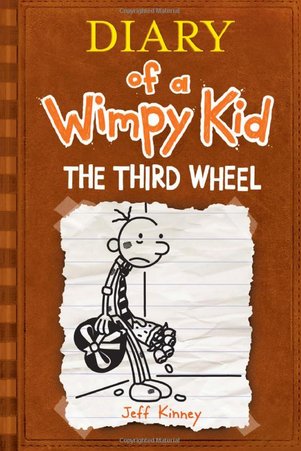
- Fourth Grade
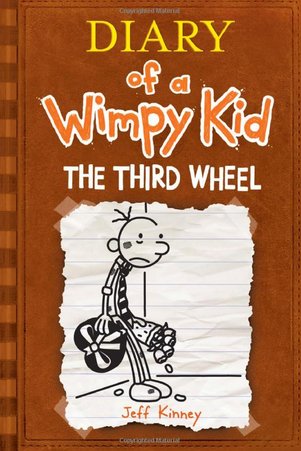
- Fifth Grade
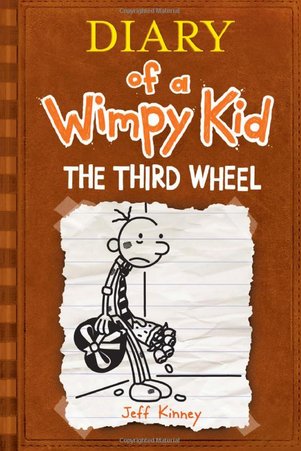
- Sixth Grade
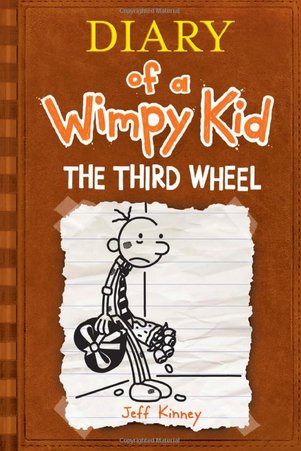
- Seventh Grade
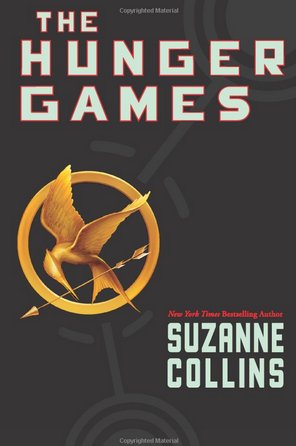
- Eighth Grade
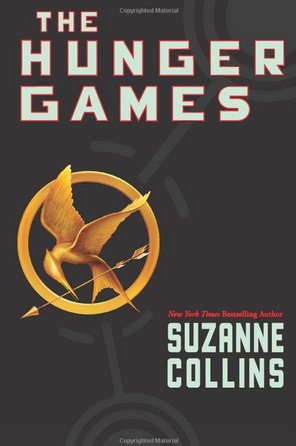
- Ninth Grade
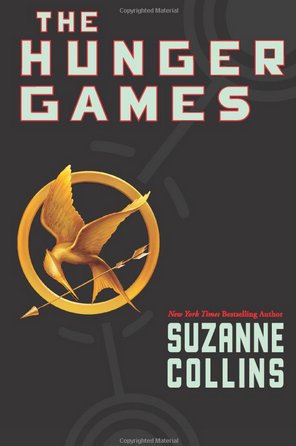
- 10th Grade
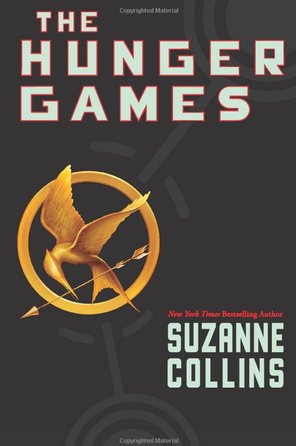
- 11th Grade
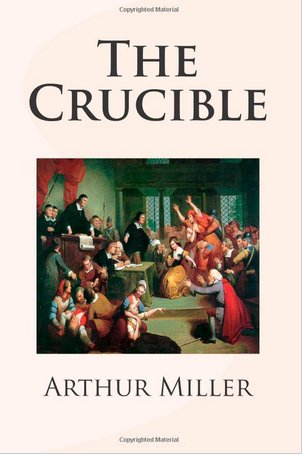
- 12th Grade
Thursday, May 1, 2014
Strategies to assist working out unknown words
When your child gets stuck on a word while reading with me, I have specific strategies that I use with them. I encourage you to use the language listed on the poster below to assist your child in becoming independent, strategic readers. This is the same prompting language I use with them.


Subscribe to:
Posts (Atom)





